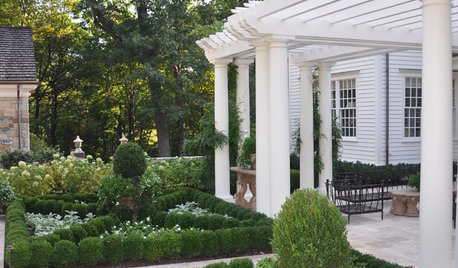Rotating crops in small raised beds?
azkayla
15 years ago
Related Stories

SPRING GARDENINGSummer Crops: How to Grow Strawberries
Pluck your own sweet strawberries right from the garden vine for smoothies, salads or eating then and there
Full Story
GARDENING AND LANDSCAPINGCream-of-the-Crop Vegetable Gardens
Both trendy and traditional, these inspired potager designs turn the everyday vegetable garden into art for your landscape
Full Story
SUMMER FRUITS AND VEGETABLESHow to Grow Your Own Fresh, Sweet Corn
Here's how to plant and care for your own mini cornfield
Full Story
EDIBLE GARDENSHow to Grow Your Own Sweet Summer Crops
This guide will help any gardener get started on growing the freshest warm-season veggies and berries for summer
Full Story
EDIBLE GARDENSSummer Crops: How to Grow Tomatoes
Plant tomato seedlings in spring for one of the best tastes of summer, fresh from your backyard
Full Story
FARM YOUR YARDIf You Have Room for Only One Summer Crop ...
Get an edible that’s long on flavor even if you’re short on space, with a long-time gardener’s favorite picks
Full Story
MOST POPULARSummer Crops: How to Grow Sunflowers
Savor snack-tastic sunflower seeds once the radiant blooms have faded — if the birds have saved you any, that is
Full Story
EDIBLE GARDENSSummer Crops: How to Grow Squash
Almost foolproof and with cheerful flowers, squash comes in a wide range of varieties to plant in spring
Full Story
FARM YOUR YARDHow to Build a Raised Bed for Your Veggies and Plants
Whether you’re farming your parking strip or beautifying your backyard, a planting box you make yourself can come in mighty handy
Full Story
GARDENING GUIDES8 Materials for Raised Garden Beds
Get the dirt on classic and new options for raised vegetable and plant beds, to get the most from your year-round garden
Full StorySponsored






queuetue
engineeredgarden
Related Professionals
Fitchburg Landscape Architects & Landscape Designers · Biloxi Landscape Contractors · Cerritos Landscape Contractors · El Segundo Landscape Contractors · Hayward Landscape Contractors · Los Banos Landscape Contractors · Siloam Springs Landscape Contractors · St. Louis Landscape Contractors · St. Louis Landscape Contractors · Wailuku Landscape Contractors · Chicago Ridge Landscape Contractors · Apache Junction Fence Contractors · Lexington Fence Contractors · Zion Fence Contractors · Safety Harbor Fence Contractorssinfonian
worldofyardcraft
Melissa Houser
Dan _Staley (5b Sunset 2B AHS 7)
anniesgranny